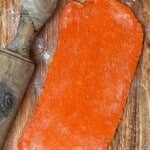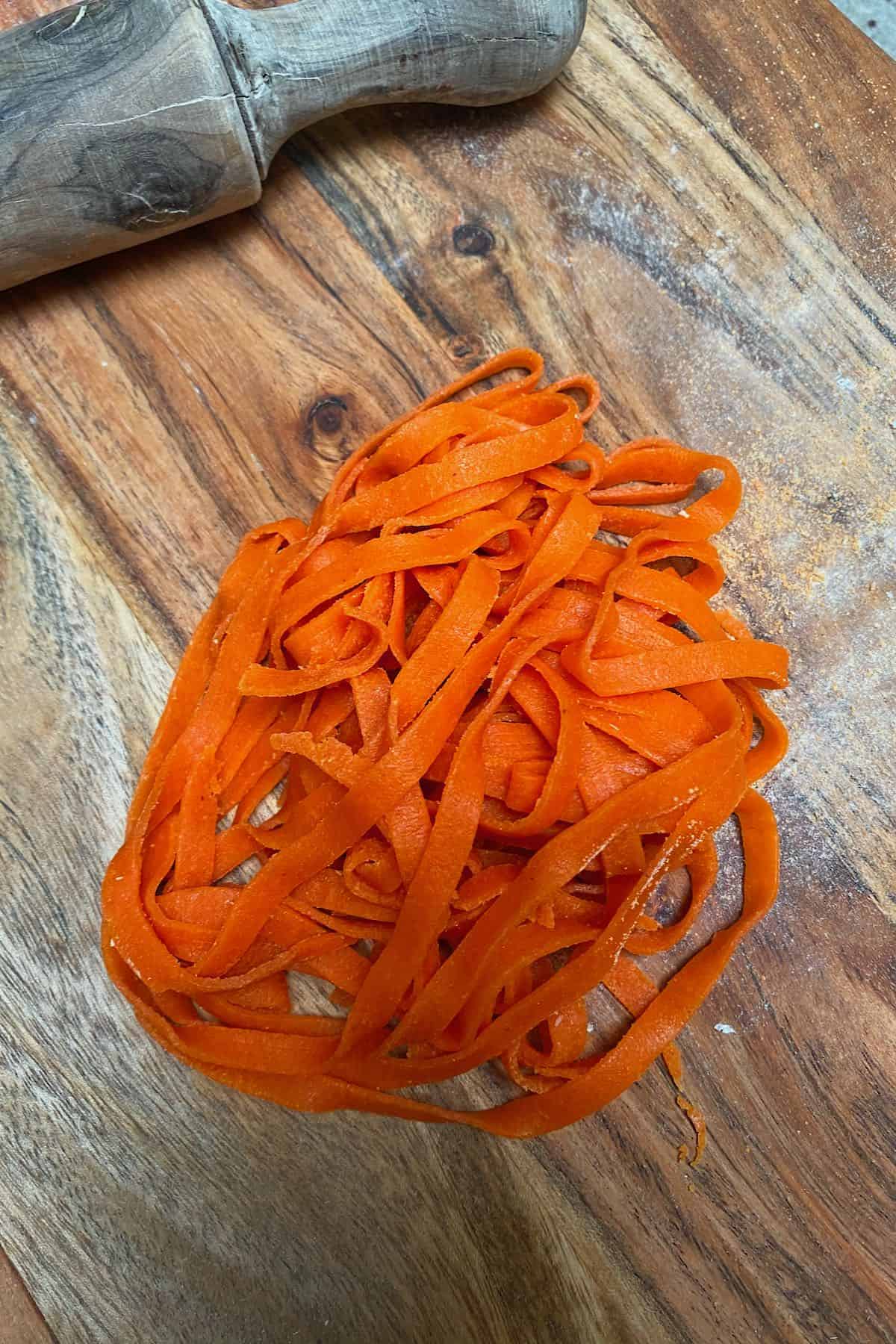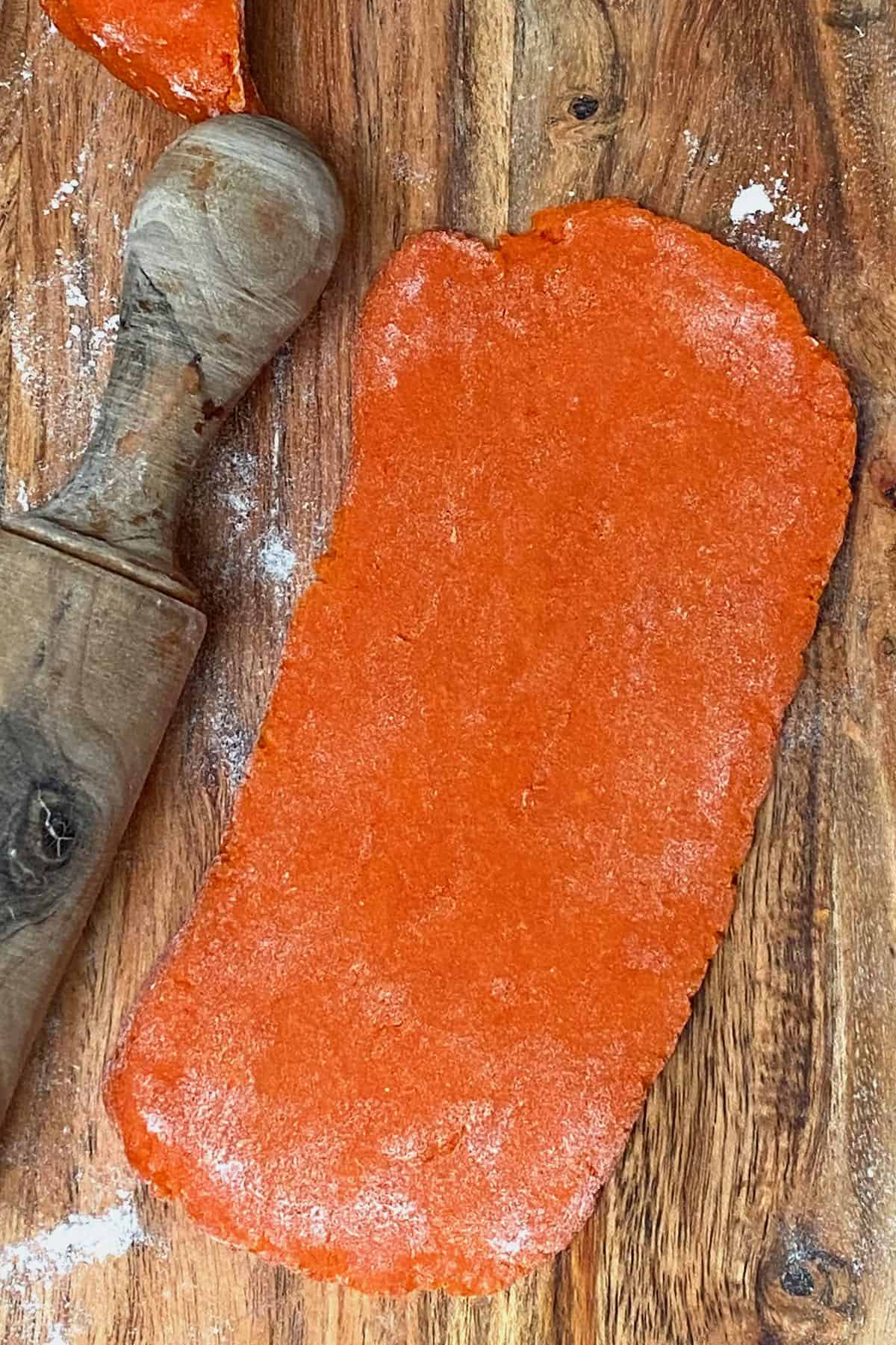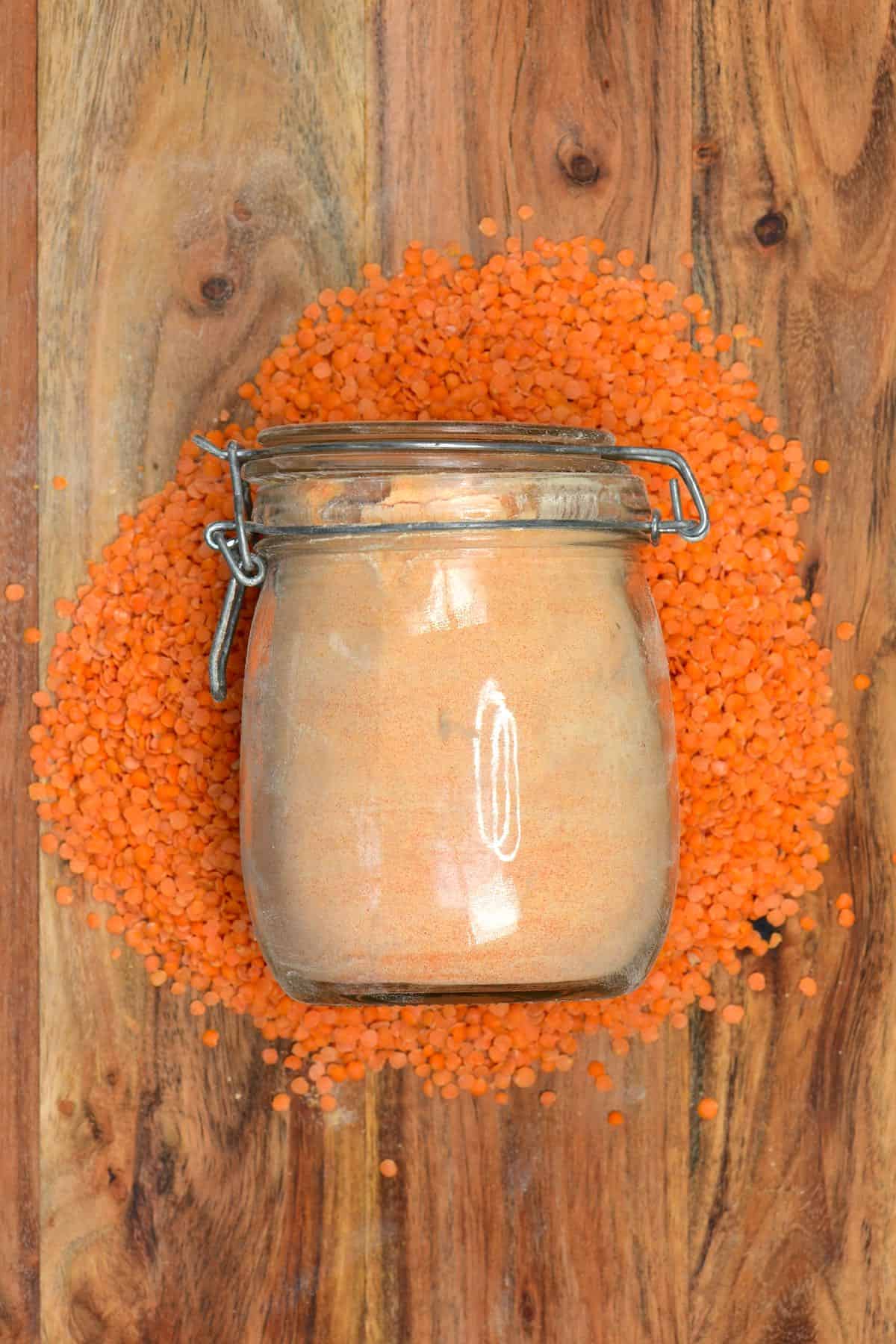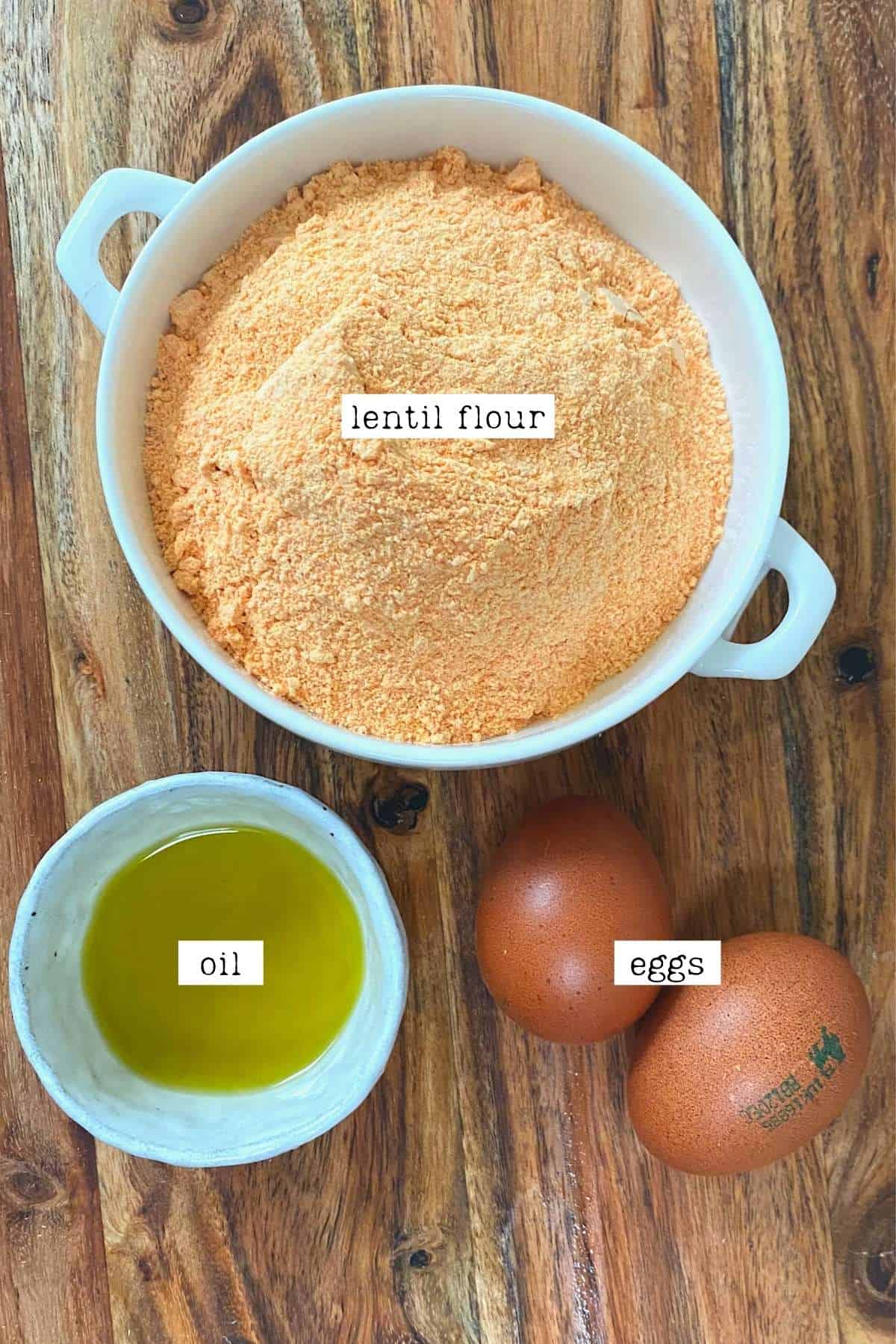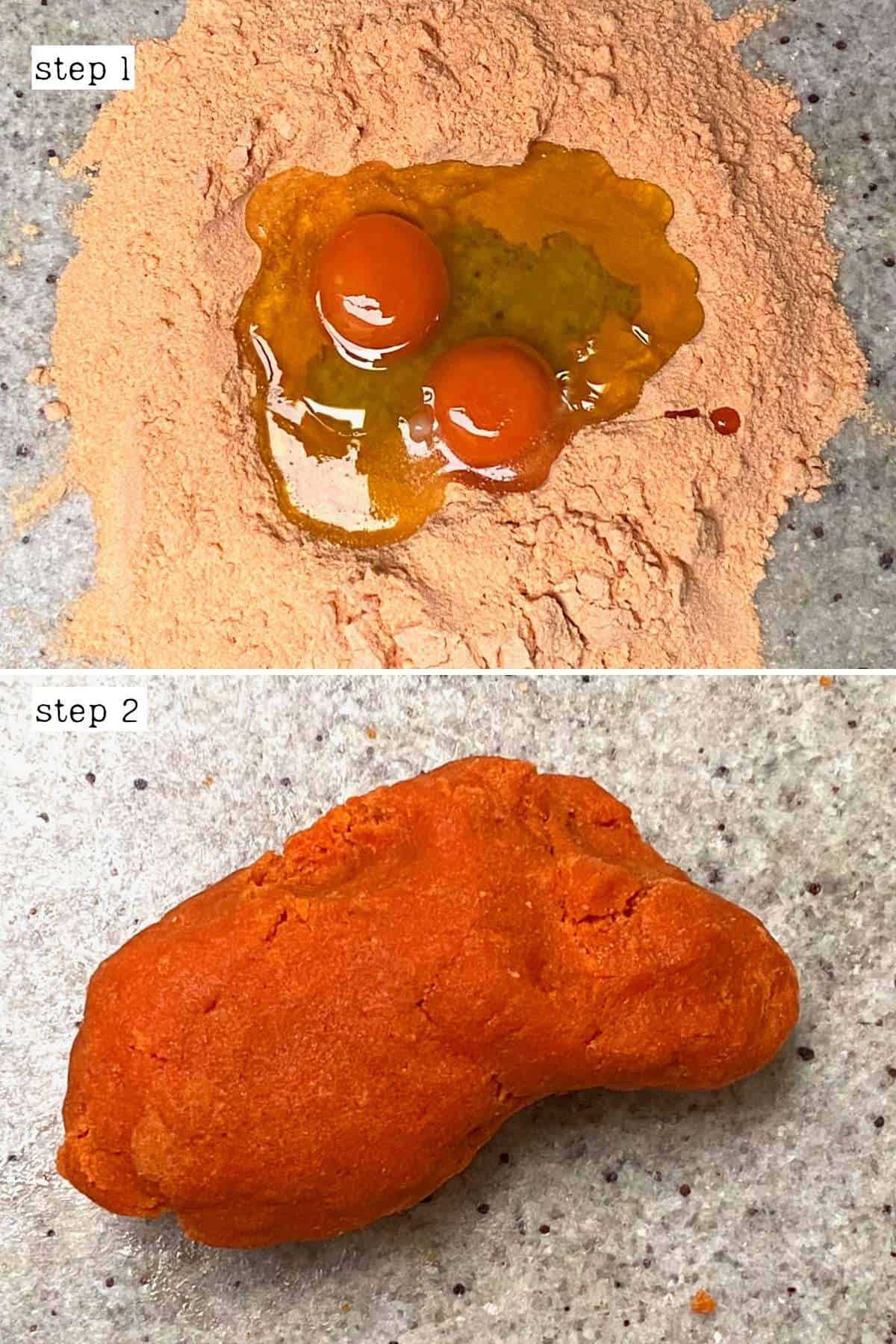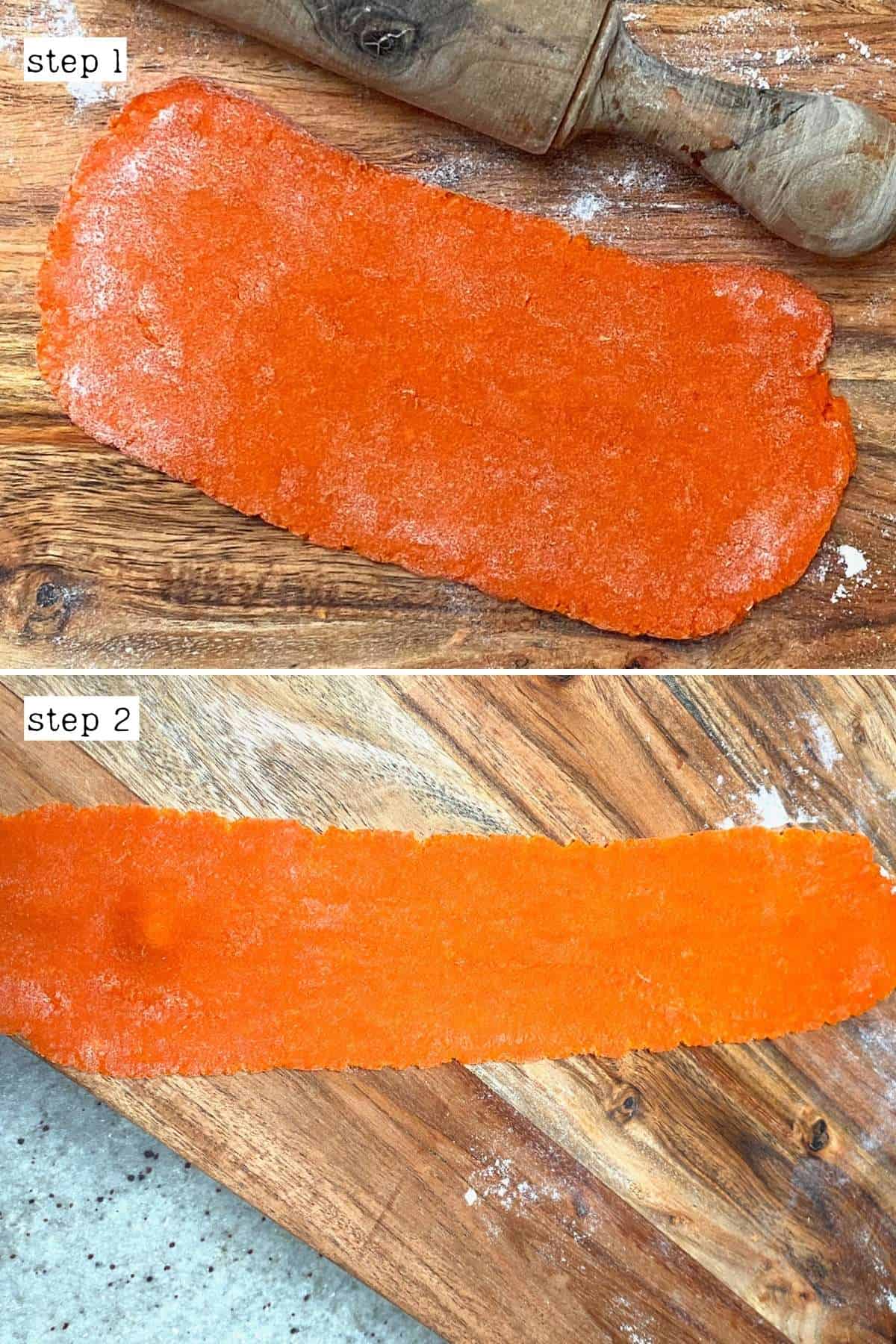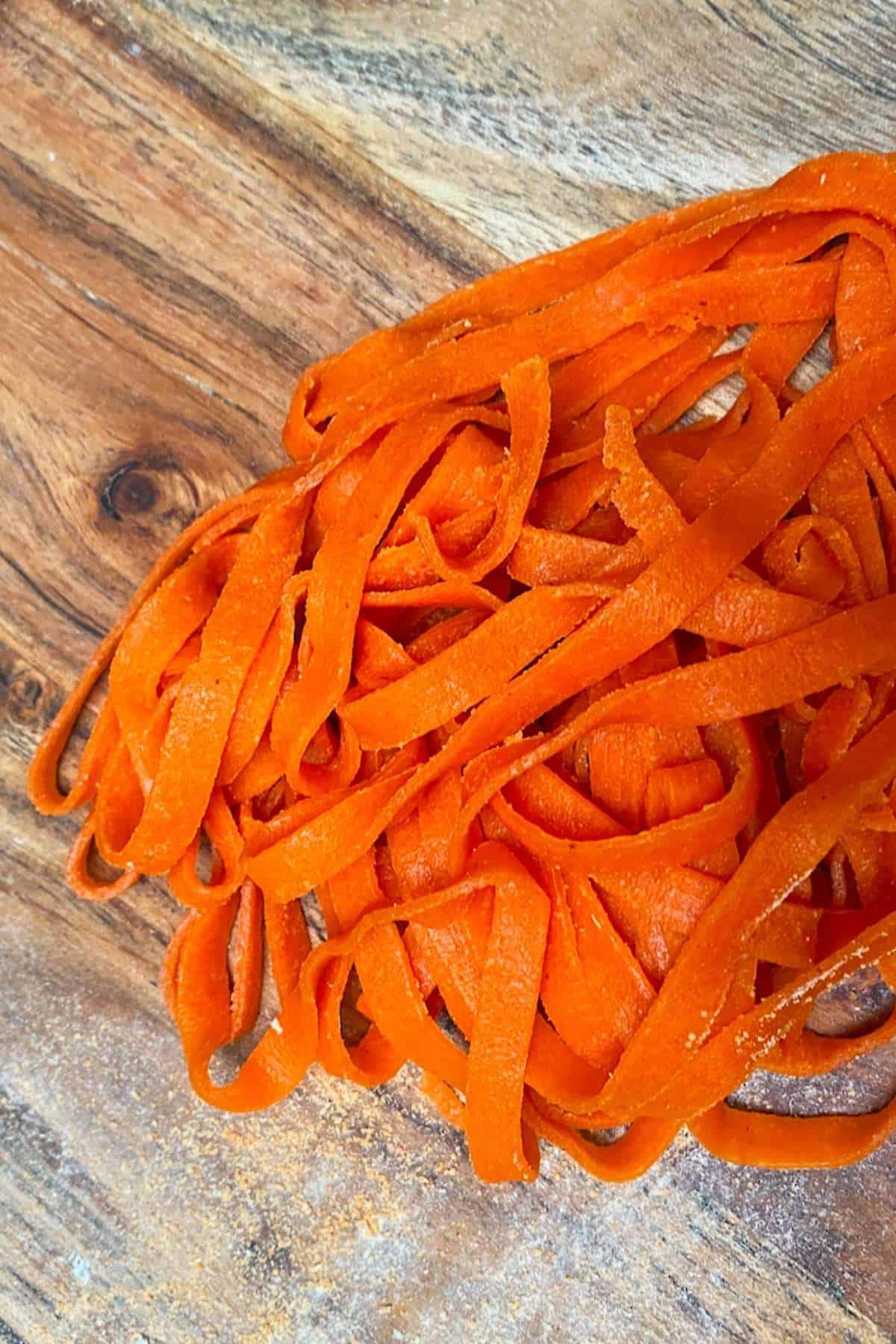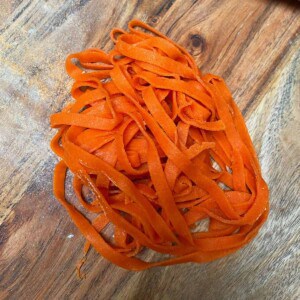I feel like I’ve said this on every single past post that I’ve written, but – you wouldn’t believe how simple it is to make homemade pasta! Having already posted All-Natural Homemade Rainbow Pasta and Vegan Pasta (among other pasta recipes), I thought I’d try my hand at this gluten-free pasta alternative: red lentil pasta. This red lentil pasta comprises just three ingredients: gluten-free lentil flour, eggs (or flax eggs), and olive oil. Homemade red lentil flour is ridiculously easy (and cost-effective) to make at home, making this pasta just as cost-effective and a delicious way to enjoy a lunch or dinner. Legume pasta has increased in popularity a lot over the last decade or so, and with good reason. Not only is it a great option for this with issues with gluten, but they are also usually superior in nutrients and health benefits in comparison to a standard, traditional pasta. Red lentils are not only chock full of protein, but they’re also high in fiber, several vitamins, minerals, and antioxidants, and even rich in healthful plant compounds and antioxidants (read more of the benefits in my lentil flour post). The flour, while nutty and lentil-y in flavor, blends well into a flavorful pasta and pairs well with any sauce.
Top tips to dealing with gluten-free pasta
While it’s true that gluten-free pasta doesn’t necessarily behave the same way as traditional pasta when cooked, it doesn’t mean that it’s not enjoyable. It’s just about learning to deal with the pasta in a slightly different way than you’re used to. One of the common complaints about gluten-free pasta is that it can easily overcook and become mushy or even break apart, and it’s true. This is easily remedied, though, by learning the cooking times of the pasta you’re dealing with. It’s true that, without gluten, this red lentil pasta is more fragile and will break down if overcooked – so make sure not to overcook it. In fact, there are a few tips that I can provide for dealing with gluten-free pasta, like this lentil pasta, to get the best results you can!
The Tips
Don’t overcook the pasta: Okay, I know I just said this, but it needs to be reiterated. Without the gluten, this pasta can and will get mushy and/or fall apart if overcooked. Remove the pasta from the heat once it’s just reached al dente texture, with a slight bite but not too firm or soft. It will continue to cook slightly after drained. Stir the pasta: gluten-free pasta can clump together if not stirred frequently during the beginning of the cooking process. Stir the pasta for the first 20-30 seconds it’s in the pan. Then give it a gentle stir every 30-40 seconds for the first 3-4 minutes of the cooking process. Don’t go light on the salt: Okay, this is really a tip for all pasta making, but definitely worth mentioning. Be liberal when salting the cooking water. Your pasta won’t absorb all the salt, so a lot is needed to permeate it properly. Deal with the cooked pasta quickly: once the pasta is cooked, you’ll then need to drain it and add it to whatever sauce you’re using. Do this quickly as the pasta will stick if you rest it in the colander for any amount of time. Add the pasta back into the pan and stir through the sauce to make sure it doesn’t stick together. Use extra water for cooking: as gluten-free pasta is more starchy than traditional pasta, it can be a good idea to use more water than you usually would. That way, the starchiness is watered down to help avoid the issues with the sticking. Save some of the pasta water: following on from the above tip, it’s a good idea to save some of the pasta water to add to your pasta sauce. You may be surprised at how absorbent that gluten-free pasta is. Having extra liquid at hand to increase the amount of sauce is super handy. Extra note: You can also save the leftover pasta water and freeze it to add to broths and soups. Unfortunately, it’s not good for watering plants as it’s salted, but there’s no use in throwing it all away unnecessarily. If it’s unsalted, then it’s perfect for watering plants!
How to make lentil pasta
The Ingredients
Red lentil Flour – I use homemade. Eggs – for a vegan version, you can use flaxseed eggs. Olive oil
Optional: Add a tsp of xanthan gum for a slightly more pliable dough – to make up for the lack of gluten.
The step-by-step instructions
Step 1: Prepare the red lentil pasta dough
First, pour the lentil flour out onto a clean, dry surface. Create a well in the center and add the eggs (or flax eggs) and olive oil. Mix/knead until you achieve a homogeneous dough. Be careful when dealing with the dough as it will be more fragile than pasta containing gluten. Form the dough into a ball and set it aside for 10-15 minutes. This will make it easier to manage and cut. If you find that the dough is a little too crumbly, then you can add some water. Add one tablespoon at a time until it forms a dough.
Step 2: Shape/Chop your homemade pasta
Once rested, divide the dough into smaller, more manageable pieces. I usually cut it into 5-6 pieces. Roll each piece of dough into thin sheets and cut into your desired shape. I.e., pappardelle or thinner noodles, bows, etc. You can also use a pasta machine/press to create noodles, macaroni, penne, etc. Note: You can also use the pasta machine to roll out the dough. Begin by rolling it out with a rolling pin to fit through the pasta machine’s widest setting. Then feed it through the machine a few times, making it thinner until you achieve the correct thickness. To cut into tagliatelle/pappardelle by hand, take your rolled out dough (the length that you’d like your pasta noodles to be). Liberally flour it, and then roll it up. Use a sharp knife to cut the dough into noodles as thin/wide as you’d like.
Step 3: Store or cook the lentil pasta
Once you’ve cut the pasta shapes, make sure to sprinkle them with more flour (I use lentil flour) so they don’t stick together. You can then cook the pasta immediately, store it in the fridge or freezer, or even dry the pasta (more on this in the storage section below). To cook the pasta, place it in a large pot of salted boiling water and cook for 5-6 minutes, stirring every 20-30 seconds to make sure the pasta doesn’t stick together. Then serve with your choice of sauce.
How to serve
This lentil pasta goes well with any of the usual sauces you use for pasta. Here are some of my favorite serving options.
Homemade Basil Pesto (Pesto Alle Genovese) Delicious Vegan Basil Pesto (with pistachios) Carrot Leaf Pesto: Waste reduction pesto recipe Super Creamy Vegan Mushroom Sauce Pasta Simple Roasted Red Pepper Sauce Easy And Delicious Marinara Sauce Recipe Easy Vegan Bechamel Pasta Bake
How to make ahead & store
Homemade pasta is great for storing fresh or dried. Store the fresh pasta in an airtight container in the fridge for 1-2 days, or freeze it for between 2-3 months. The pasta can also be dried – either at room temperature or with a dehydrator. There is debate around the shelf life of dried egg pasta due to the risk of salmonella. To err on the side of caution, I keep my dried pasta in an airtight container in a cool location and use it within a month. You can also freeze the dried pasta for up to six months. To dry the pasta: You can use pasta drying racks, a dehydrator, or lay the pasta out on a large tray in a well-ventilated area. If you’re making any type of noodle, then you can begin to dry them flat for 1-2 hours. Then, while the pasta is firm but still pliable, form it into loose nests of around one portion each. Depending on the climate and humidity, the drying time will vary. If you live in a very humid area, I probably wouldn’t attempt to dry the pasta.
Related recipes
Gluten-Free Red Lentil Crackers (Lentil Chips) How To Make Chickpea Flour Pasta How To Make Oat Pasta Homemade Pappardelle Floral Pasta & Basil Pesto How To Make Vegan Pasta At Home All-Natural Homemade Rainbow Pasta Fresh Homemade Spinach Green Pasta Salad How to Make Beet Pasta (Pink Pasta Recipe)
If you try this red lentil pasta recipe, then let me know your thoughts and questions in the comments. I’d also really appreciate a recipe rating and would love to see your recreations – just tag @AlphaFoodie.



